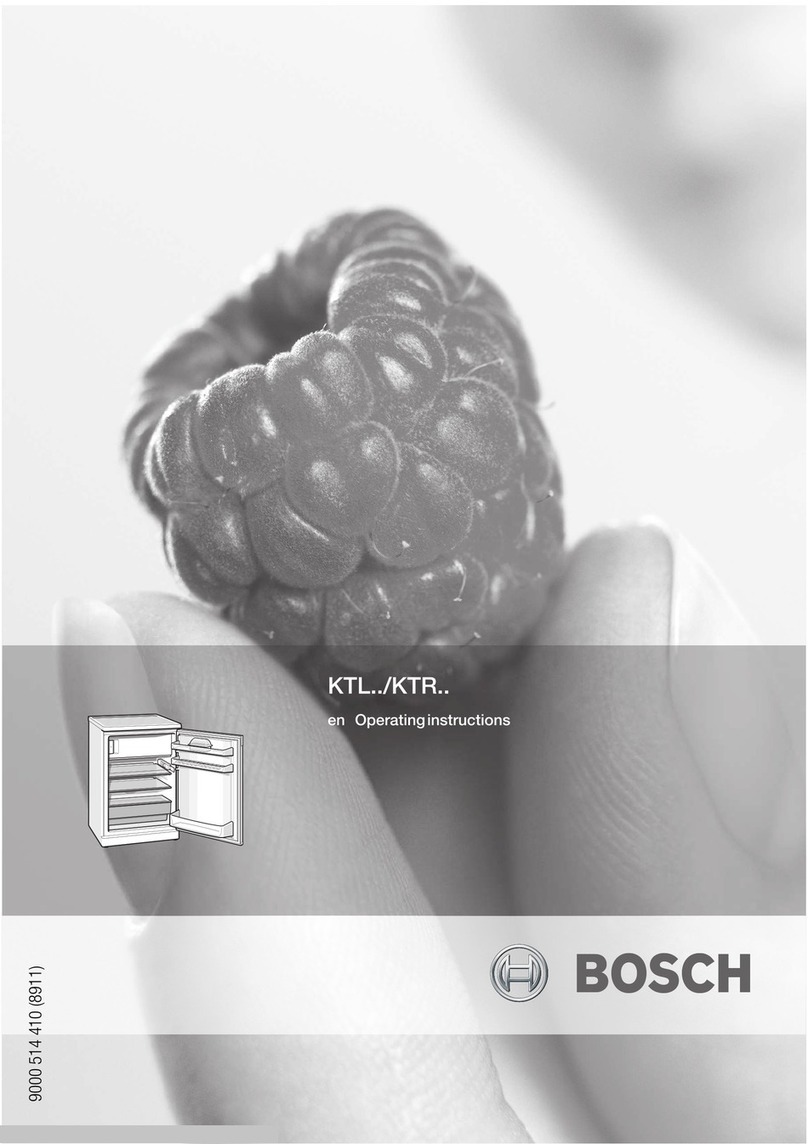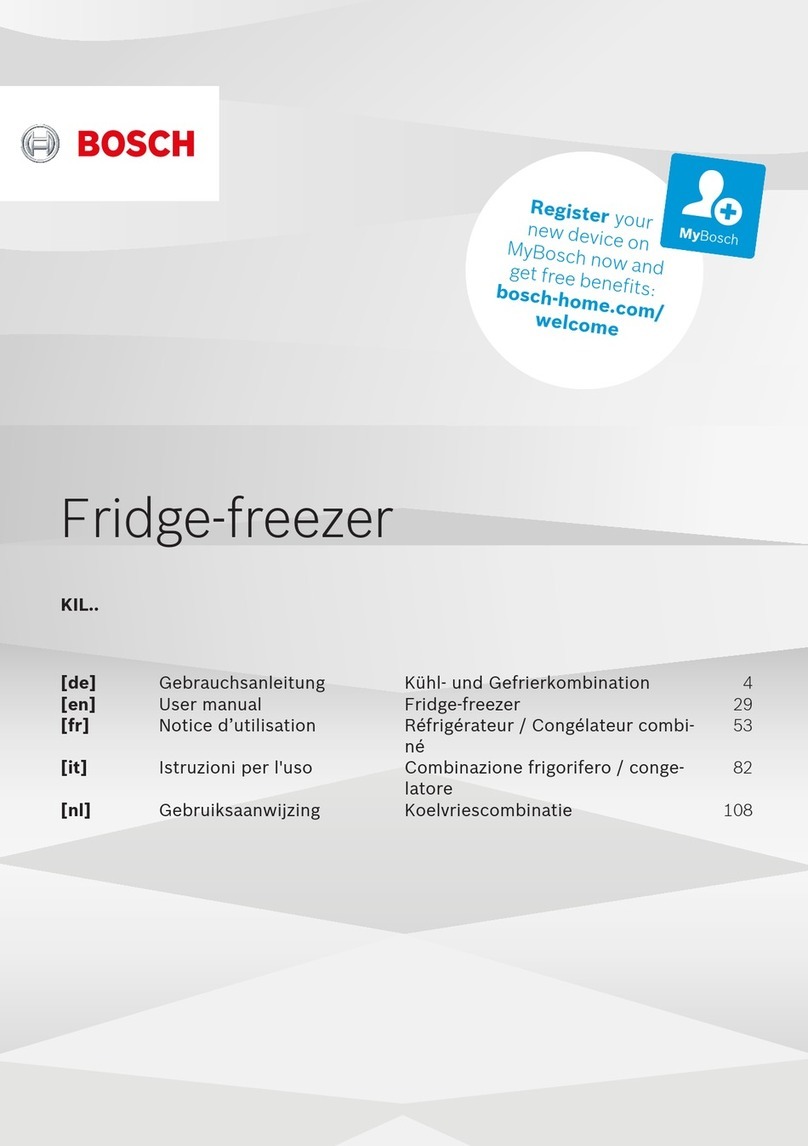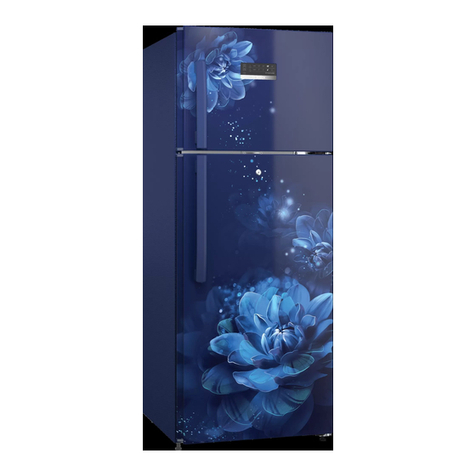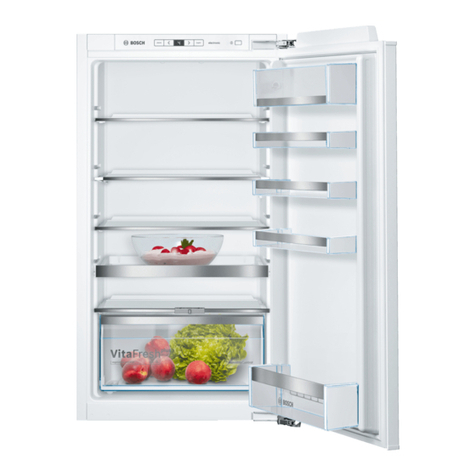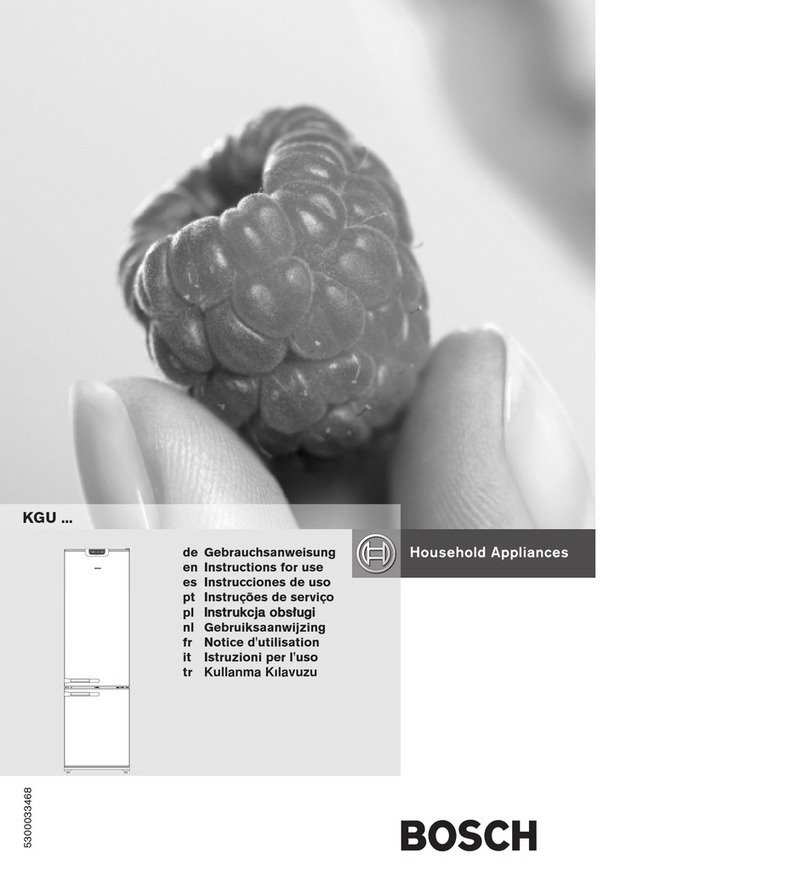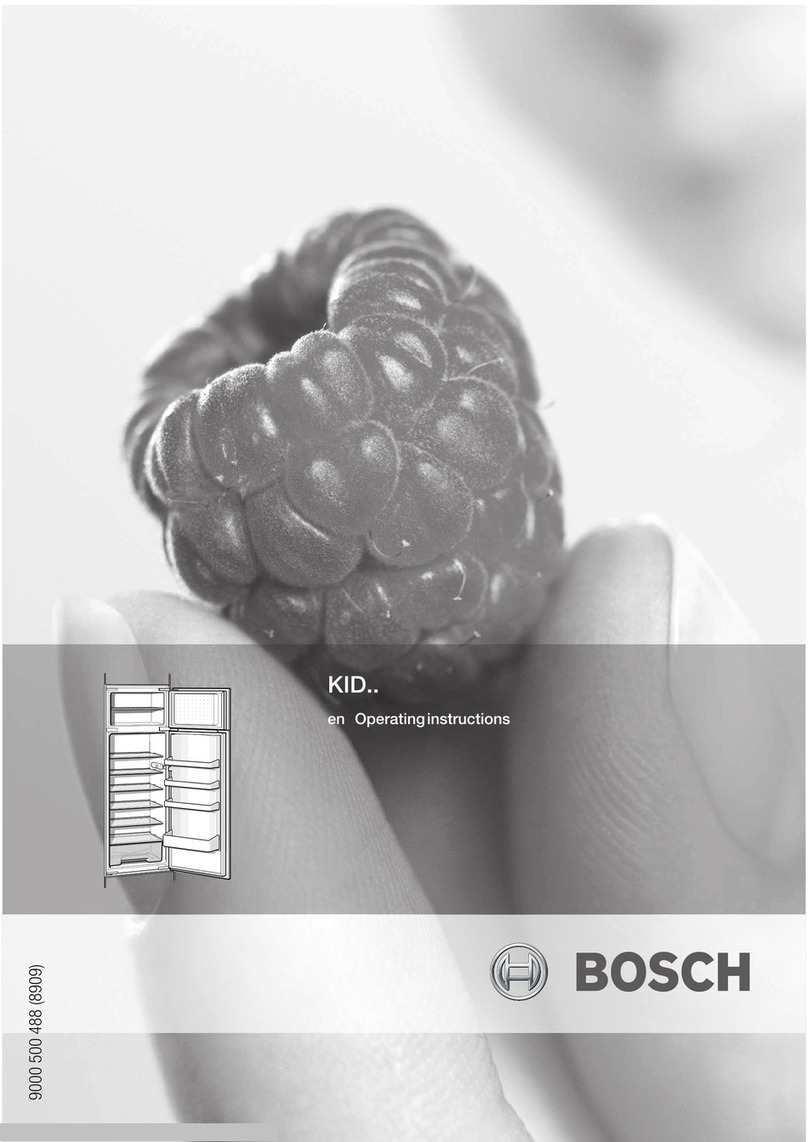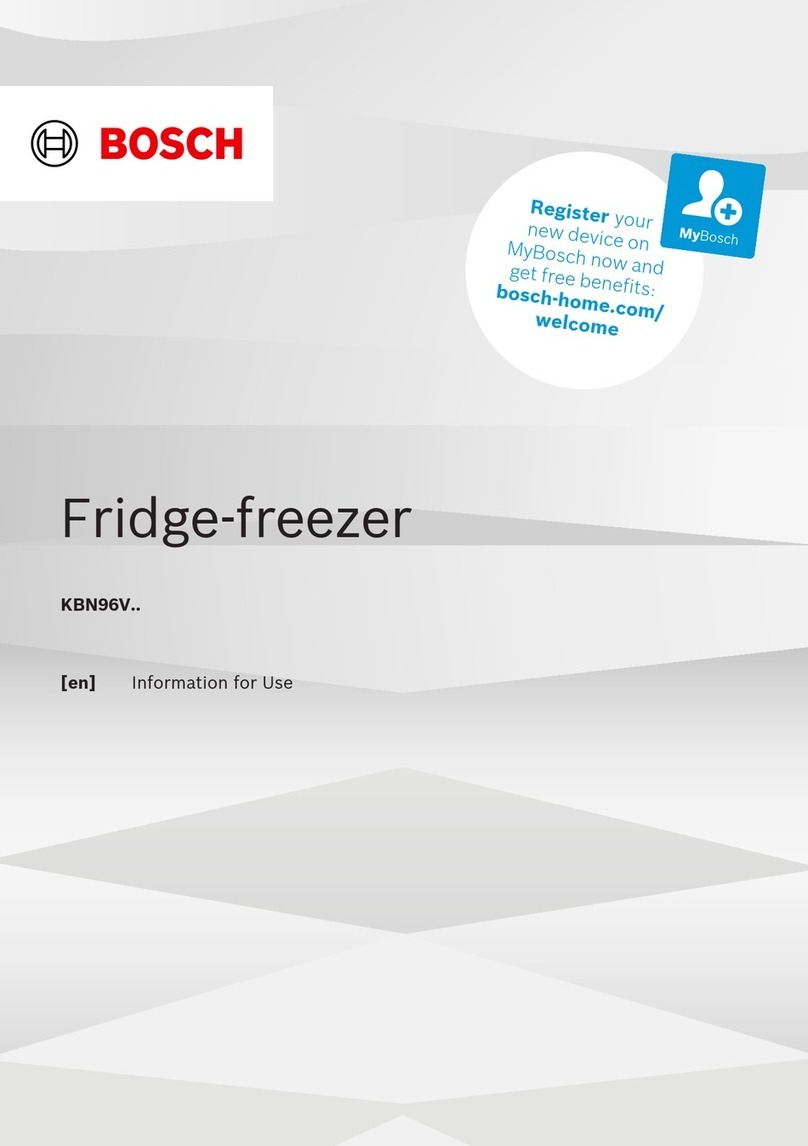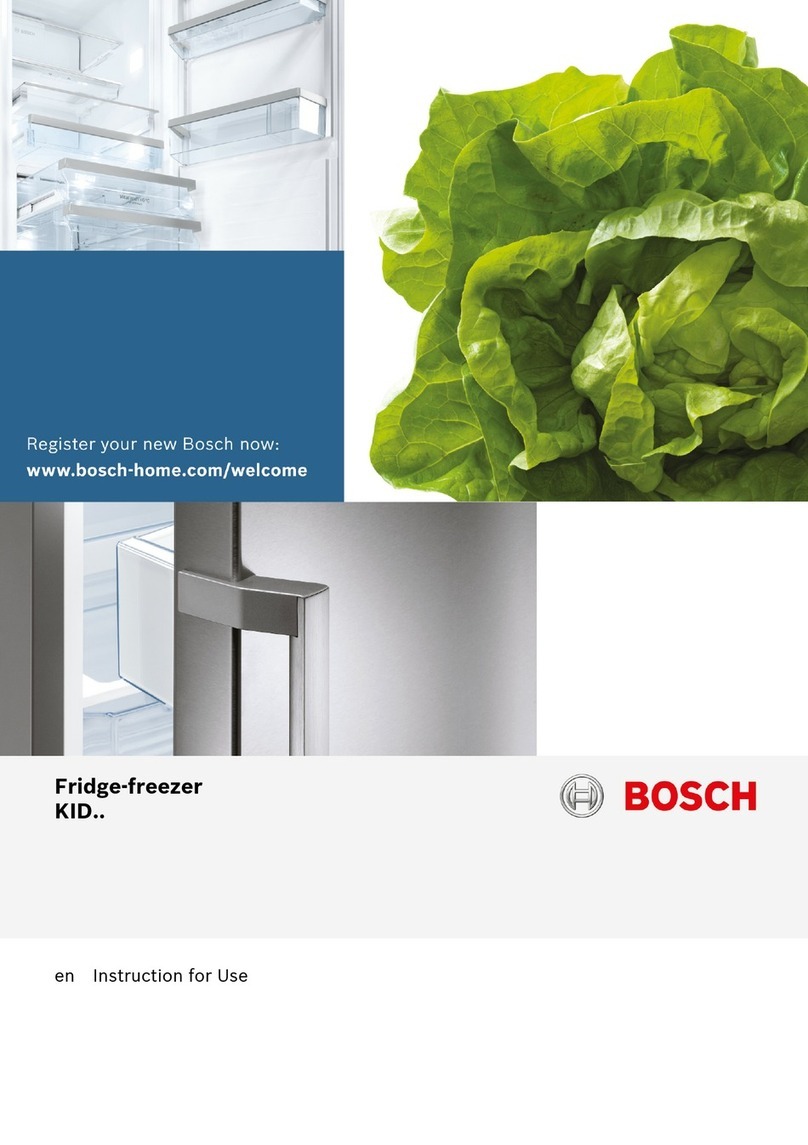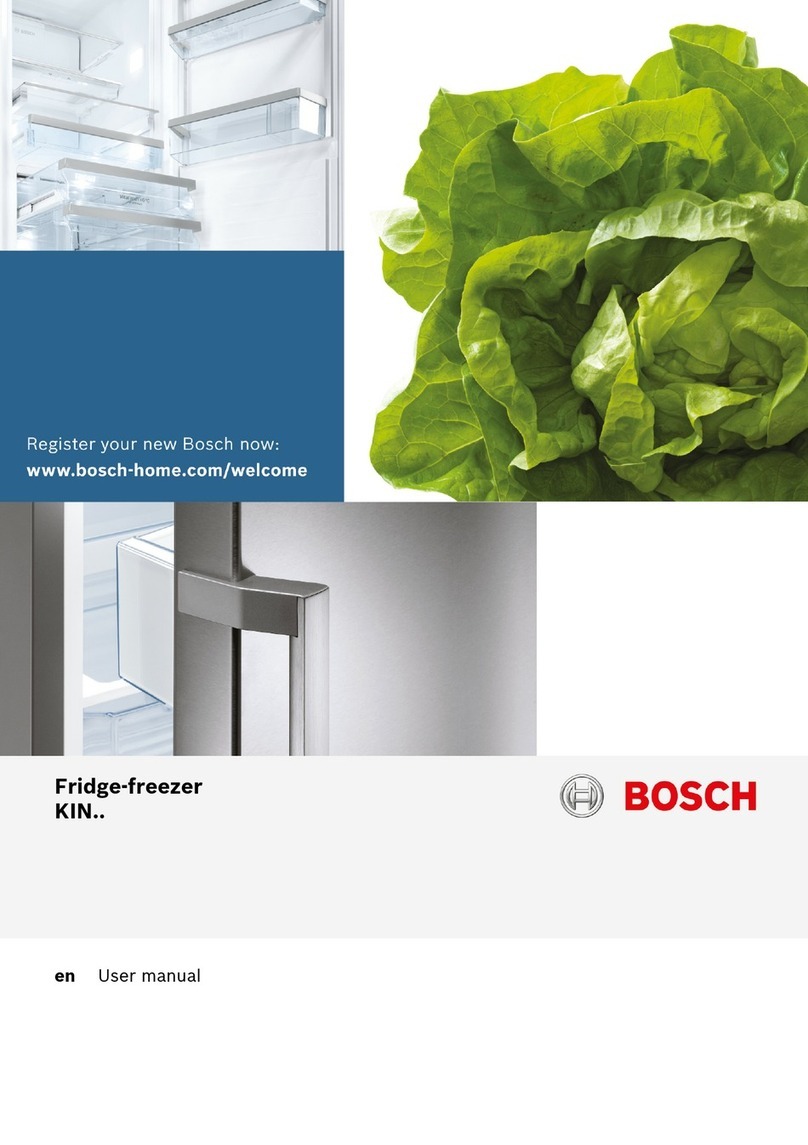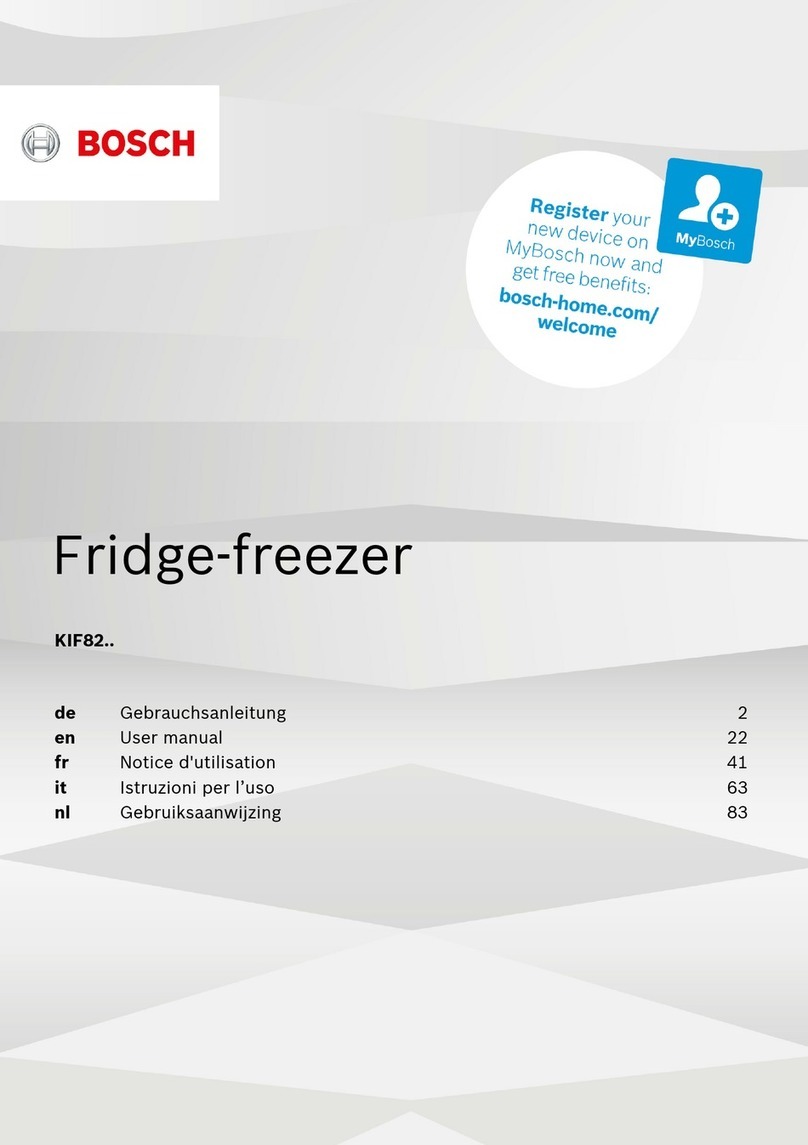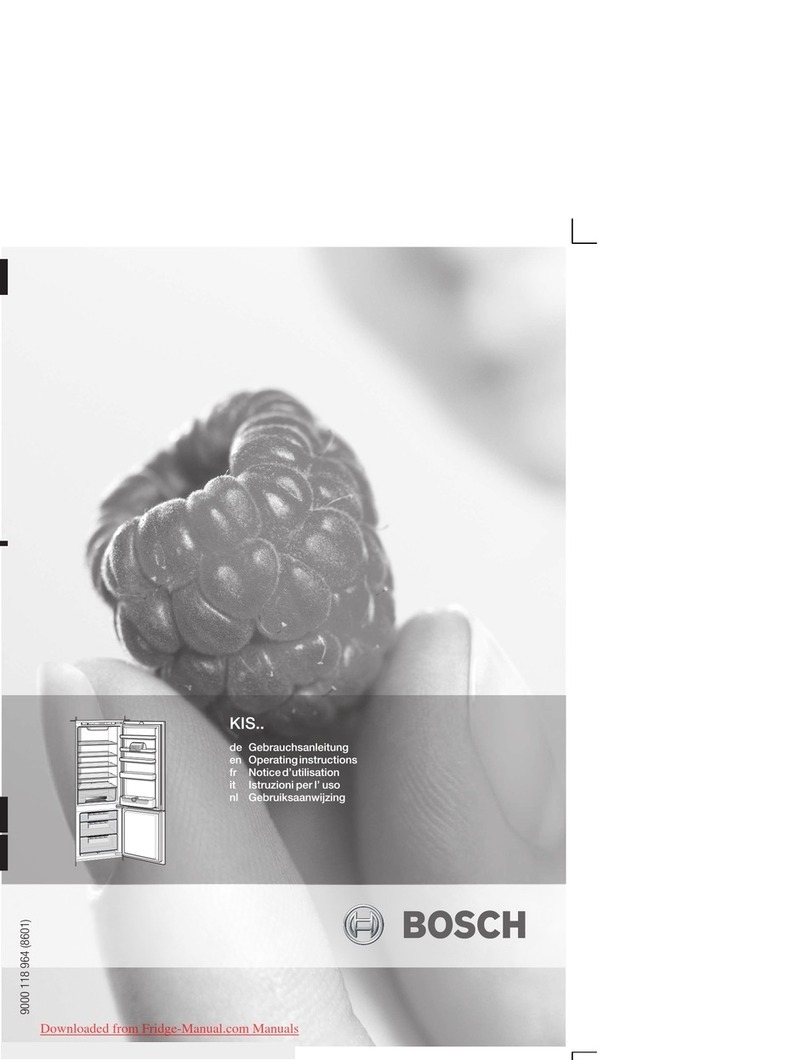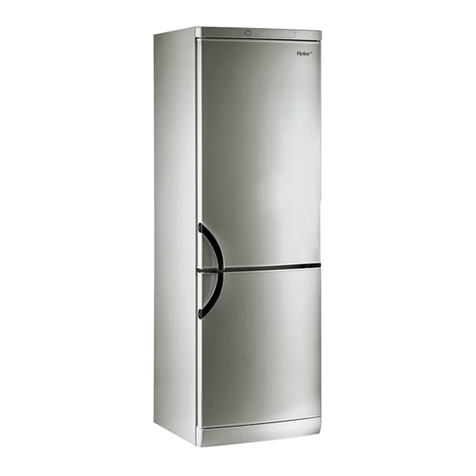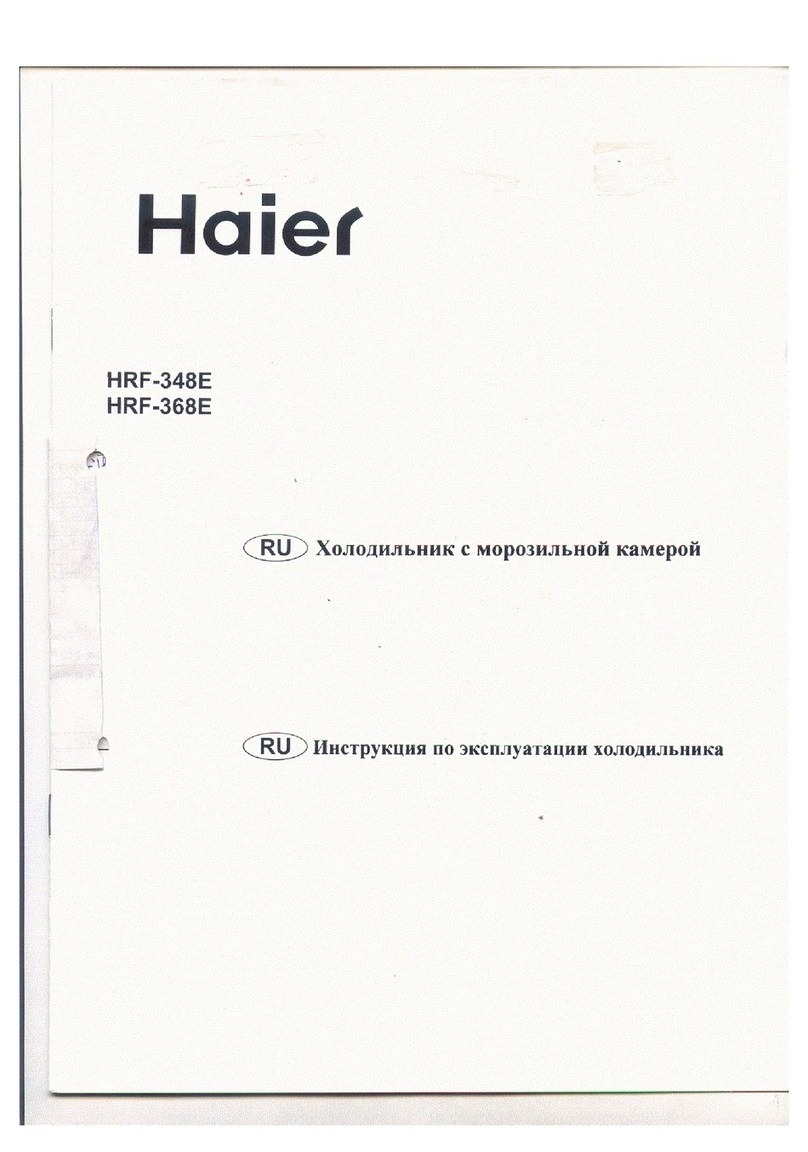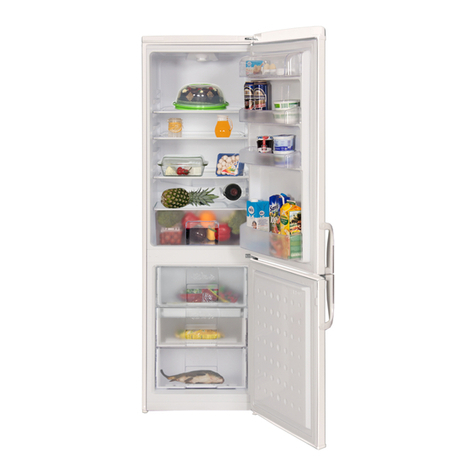3
Safety and warning
information
Before operating the
appliance
Read the instruction and installation
manual carefully.
Theycontain importantinformation on
settingup, using, and maintainingthe
appliance.
Retain all documents for later use or
for subsequentowners.
Safety
The appliance contains a small
amountof the refrigerantR600a, which
is environmentallyfriendlybut
flammable.Make sure thatthe
refrigerantcircuitpipes are not
damaged duringtransportor fitting. If
refrigerantsprays out, itcan cause eye
injuries or ignite.
In the eventof damage:
nKeep open flames or sources of
ignition awayfrom the appliance,
nVentilate the room well for a few
minutes,
nSwitch off the appliance and
unplugitfrom the mains,
nInform customer service.
The more refrigerantthe appliance
contains, the greater the space
requirements for the room where itis
installed.If the room is too small, a
flammable gas/air mixture may
accumulate if there is a leak.
The room mustbe atleast1m3large
per 8gof refrigerant. The quantity of
refrigerantin the appliance is stated on
the nameplate inside the appliance.
If the appliance’s mains cable is
damaged, itmustbe replaced bythe
manufacturer, customer services, or a
similarlyqualified person.Improper
installation and repair jobs can place
the user in considerable danger.
Repairs mayonlybe carried outbythe
manufacturer, customer services, or a
similarlyqualified person.
Onlyoriginal parts of the manufacturer
maybe used.The manufacturer only
guarantees thatthe safety
requirements are metif these parts are
used.
Amains cable extension lead mayonly
be procured via customer services.
During operation
nNever use electrical appliances
inside the appliance (e.g.heaters,
electric ice makers).
Risk of explosion!
nNever defrostor clean the
appliance with a steam cleaner.
Steam can come into contactwith
electrical parts and cause a short
circuitor an electric shock.
Risk of electric shock!
nDonot use pointed or sharp
objects to remove layers of ice and
frost! Doingsocan damage the
refrigerantpipes.If refrigerant
sprays out, itcan ignite or cause
eye injuries.
nDonot store products with
flammable propellantgases
(e.g.spraycans) or explosive
substances inside the appliance.
Risk of explosion!
nDonot use base, drawers, doors,
etc.as steps or supports.
nWhen defrostingand cleaningthe
appliance, disconnectthe mains
plugor switch off the circuit
breaker.Tugon the mains plug, not
on the cable.
nStore high percentage alcohol only
in tightlyclosed containers and
upright.
nDonot soil plastic parts and the
door seal with oil or grease.If you
doso, the plastic parts and door
seal will become porous.
nNever cover or blockventilation
openings on the appliance.
nChildren and people with impaired
physical, sensory, or mental abilities
or wholackknowledge of the
appliance mustonlyuse itif they
are supervised bya person whowill
take responsibility for their safety or
whohave learned how to use the
appliance byreadingthis manual.
nDonot store liquids in bottles or
cans in the freezer compartment(in
particular carbonated beverages).
Bottles and cans mayburst.
nNever eatfrozen foods immediately
after theyhave been taken outof
the freezer compartment.
Risk of freezer burn!
nAvoid prolonged contactof your
hands with frozen foods, ice, and
the evaporator tubes etc.
Risk of freezer burn!
Children in the household
nDonot give packagingor
packagingparts to children.
Danger of suffocation from
cardboard boxes and films!
nThis appliance is not a toy!
nFor appliances with a door lock:
Keep the keyoutof the reach of
children!
General requirements
The appliance is suitable for the
followingtasks:
nChillingand freezingfood,
nMakingice cubes,
nDispensingdrinkingwater.
This appliance is intended for domestic
use in private households and for a
domestic environment.
The appliance is fitted with interference
suppression in accordance with
EUDirective 2004/108/EC.
The refrigerantcircuithas been tested
for leaks.
This appliance corresponds to the
relevantsafety requirements for
electrical appliances (EN60335/2/24).
deen



